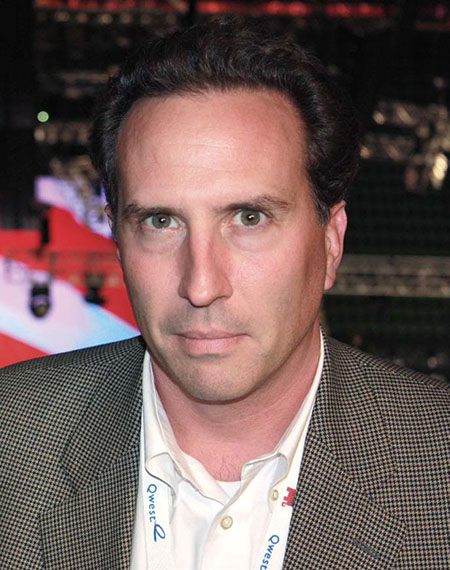The Future of 5G and IP-ENG
SEATTLE—The quality and reliability of cellular networks has incrementally grown over the life of that technology, denoted principally in Gs (for generation), as in “1G,” “2G,” etc. Bonded cellular liveshot equipment became possible for SD video somewhere between 2G and 2.5G, and in the U.S. today the most advanced technology in use is 4G and LTE (Long-Term Evolution).

SW Event Technologies used Dejero’s bonded cellular technology to support coverage of the White Spot Delta road race in British Columbia recently.
But cellular technology stands still for no one, and somewhere around the corner is 5G, operating at higher frequencies and capable of much higher data rates. And the industry is moving fast, with AT&T and Verizon planning 5G launches in a certain markets by the end of the year.
While cellular liveshot equipment users have to live in the here-and-now of 3G and 4G network capabilities, makers of such equipment have 5G very much on their radar, even though there’s yet no standard for 5G deployments. The reason for 5G excitement is simple:
“Bandwidth is the Achilles’ heel of our industry, the biggest limiting factor in IP video,” said Andrew Ng, manager of visual marketing at Teradek. “With the better performance of 5G and the robust infrastructure of our cellular bonding technology, 5G will enable our users to move towards publishing higher-quality video such as live 4K and HDR content.”
Cellular network operators aren’t targeting 5G capabilities primarily for cellular ENG users, which is a relatively small market.

Chris Crump, senior director of sales and marketing, Comrex
Get the TV Tech Newsletter
The professional video industry's #1 source for news, trends and product and tech information. Sign up below.
“It’s probably going to be most useful to phone consumers, especially in big cities,” said Chris Crump, senior director of sales and marketing at Comrex. “It depends on a lot of microcells and a lot of beam-forming technology that will allow people to make telephone calls in places like big cities, where there are a lot of buildings and multipath, and they weren’t able to give good service before.”
Crump said that Comrex designed its products to be agnostic to a particular cellular technology or IP technology, adding that other cellular liveshot equipment makers said they don’t see 5G as the end-all, be-all technology for cellular liveshots.
“We’re always happy with any network improvement, whether it’s 5G or network capacity, or its throughput,” said Michael Stanton, regional sales manager for Dejero. The early locations for 5G cellular sites are likely to be “stadiums and other venues, [because] the networks are looking at where they can get the most ‘bang for the buck.’ [The new sites] may be something very small, on the side of a building, and not as large as the cell sites we have today.” Even with widespread 5G deployment years off in the future, these microsites are being deployed with the current cellular technology.

Paul Shen, CEO, TVU
RELIABILITY AN EARLY ISSUE
One limitation of 5G is that because it operates at higher frequencies, it requires its cell sites to be clustered closer together for seamless coverage. While this is not an issue doing a liveshot from a fixed location, it can introduce problems going live while rolling down the road.
“If you’re in a moving environment, if there’s a cell switch, you will likely lose the signal,” said Paul Shen, CEO of TVU. More cellular sites with more limited range will mean more handoffs, and more opportunities for losing the connection along the way.
“Reliability is a very important part of it. A television station cannot say: ‘Well, most of the time I get very high quality signal, but sometimes I may lose the shot.’ That’s not acceptable,” Shen added.
Shen also noted that the higher frequencies where 5G operates can provide less robust service and the inability to penetrate building walls. “Those signals will be very easily degraded by the environment,” he said. “Even someone standing between the cell tower and the device will cause the signal to degrade.” He said this further increases the importance of antenna diversification and requires more modems for different cell service providers.
Avi Cohen, co-founder of LiveU, said that in preparing for 5G liveshot service, there’s not only the technical aspect, new modems and sophisticated antennas, but also the application aspect. “In the application level, LiveU’s developing compression with H.265, and now on top of that we’re developing for 4K,” he said. Looking beyond 4K, “we’re developing support for HDR, and looking into the future we’re looking forward to supporting 8K.”
“5G is kind of like a buzzword: ‘Oh, we’re going to have 5G connectivity,’” said Jim Jachetta, executive vice president and CTO of VidOvation.com. “That’s fine as long as long as the cell providers increase their backhaul capacity. By backhaul, I mean from the connection at the cell tower back to the central office. So just slapping on some 5G capability on the towers across the country is just part of the piece that we’re hoping that cellular providers are going to expand capabilities across the network, and particularly back.”
Jachetta gave the example of being at a ballpark and seeing three reception bars on the cellular equipment, but being unable to stream video back to the studio. “…you’re reaching the tower but you have no connection out from the tower,” he said. “And in that scenario, it’s the back link in the tower that’s the missing link.”
Persistent Systems, whose Wave Relay MANET technology is used in live event broadcasting is also following the 5G transition closely. Kayla Lively, spokesperson for the company, noted that as the technology becomes more widespread, it could have unforeseen consequences on the ENG market.
“Due to a more robust infrastructure and newer technology, 5G should allow the transmitting of higher video quality and possibly more video streams via the bonded cellular platforms,” she said. “However, that increase in infrastructure will force the bonded cellular companies to renegotiate their plan fees and figure out how to disperse the extra cost, ultimately falling on the ENG market. There should be many service improvements and capabilities the 5G network can provide the ENG market when bonded together, but at what cost to the ENG end user?”
For the next couple of years, users of cellular liveshot equipment will get no closer to 5G than reading about it. Liveshot equipment makers, on the other hand, are watching 5G very closely. In Europe and Japan a 5G rollout is much closer and provides a testing ground. Cellular liveshot vendor promise to have products ready when that new generation of technology deploys in the U.S.
